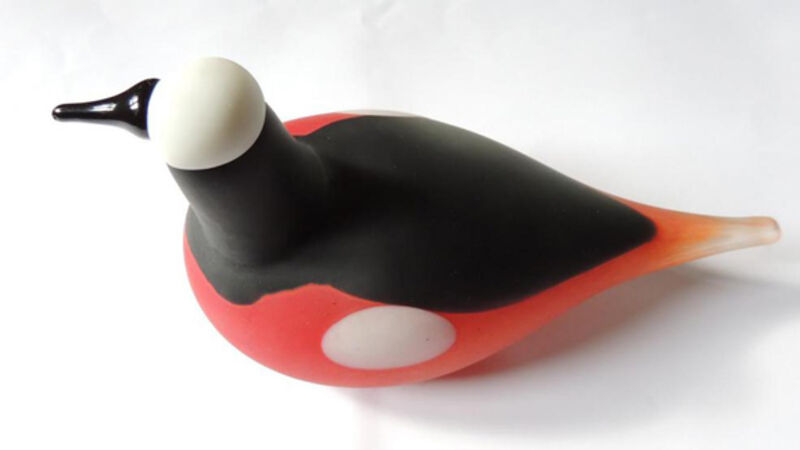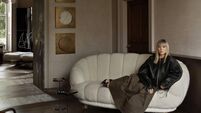Vintage view: Iitalla at Nuutajärvi

After a crusade a decade long, I finally got my bird in the hand at a Blarney car-boot sale.
Held every bank holiday Monday, it’s a heaving arena of dealers, semi-professional barrow-boys and true car-booters, stoically shovelling out the garage.
The first two rows in the field hold the best finds from sellers set up since 5am that morning. Nestled on one of the very first tables that day, was a scarlet thrush. A gelatinous handful of matt glass, he had unmistakable line — simple blobs of white glass serving for wings, pulled to a point at the tail and finished with a glossy black beak on an unlikely but elegantly upright neck.
I’ve always wanted a Toikka bird, but a hunter at heart, I’m too optimistic to pay the €150-plus asked retail for the gem-like species, new or vintage.
Oiva Toikka (b 1931) is not just talented —he’s wildly talented. Trained as a ceramic artist, he has worked in glass, ceramics, set design and textile design. His birds and Year Cubes are made in the small village of Nuutajärvi where he lives, in what is believed to be the oldest glass factory in Finland (est 1791).

It started making art glass as we know it in the 1940s, and in 1988 Nuutajärvi merged with Karhula-Iittala and is now part of their Pro Arte department. Oiva Toikka’s dew drop glassware.Kastehelmi, was first made at Nuutajärvi in 1964 and is still in production today, but it’s his legless little fowl that caught the world’s attention some forty years ago.
Toikka imagined up his abstracted birds in 1972, starting with the flycatchers common to southern Finland, and going on to create over 500 different models, all mouth blown and finished completely by hand. Toikka himself doesn’t make his popular birds, but works with a team of blowers —an important part of his ethic and personality, which he describes as ‘lazy’.
Others would call him charming and understated, and clearly having worked contentedly at the same factory all his creative life- he’s a centred, happy man. The process of birthing every original design is simple.
With Toikka standing at the shoulder of a master blower, a new ornithological jewel with the signature bubble head and paddle tail, is created spontaneously with cheerful gestures and chatter, no preparatory drawing ever even at hand.
Most are pear shaped, the neck and tail pulled from a single blown body of glass. A content lovely form, fitting the nest of the adult hand, when not gathering and throwing light from a windowsill, they beg to be held.
The vast stylised flocks of grouse, alder, swans and ibis reach not for the exact shape of bird, but for its essential character and plumage colours, using the fabulous chemistry of minerals and glass.
Magically, the slight variation in size (15-30cm in length) and searing colour patterns effortlessly convey the spirit of the bird. There are plain and fancy types, some containing opalescent free-hand flakes of glass, or scalloped feathering in contrasting colours.
The larger the bird, the more ornate the pattern and feather colour — generally the more expensive it will be on the second hand market.
Each bird, egg or other work should be signed ‘O. Toikka Nuutajärvi’ (the script is tiny) and should in the best cases, carry the Iitalla sticker, a boxy ‘i’ in a red circle.
Only buy pieces in perfect, un-chipped condition with the minimum of rubbing to the base.
Discontinued lines like my Redstart and even limited editions can still be found under €150 on Ebay and through collector’s clubs.
Pedestal birds, the annual Nuutajärvi bird (named Birds by Toiika); those made for the Museum of Glass in Tacoma Washington; non-catalogue varieties and those with open wings, command a premium starting in the area of €350.
I’m warning you — once you have a Toikka bird, you’ll want another to keep it company. Get out there and bag one.












